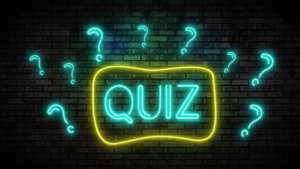Modes of Communication
Communication is a buzz word in the modern ELT world and communicative approach is probably the most popular one nowadays. After a year that I spent teaching language in an American college I found out that there is a whole new view on the good old communicative approach across the ocean.
American system which was designed by ACTFL (American Council on the Teaching of Foreign Languages) provides clear features of what a good communicative activity is and is easy to use while lesson planning to make your activity more meaningful and authentic.
So in a series of articles we will unfold these principles one after another and we will start today with communication itself.
Communication can be divided into three modes.
Interpersonal
- Characterized by active negotiation of meaning among individuals.
- Involving adjustments or clarifications for understanding.
- Most obvious in conversation where one person does not know what the responses of the other person will be (i.e., not scripted dialogues).
Interpretive
- Focused on the appropriate cultural interpretation of meanings that occur in written and spoken form where there is no recourse to the active negotiation of meaning with the writer/speaker.
- Including the cultural interpretation of texts, movies, radio and television broadcasts, and speeches.
- Not to be confused with the concept of “comprehension”.
Presentational
Referring to the creation of messages in a manner that facilitates interpretation of members of the other culture where no direct opportunity for the active negotiation of meaning exists.
If you try to plan your activity around communication modes instead of skills you need to teach it can eliminate some questions. Fоr example, when a teacher fоcuses оn teaching and practicing writing as a skill and then is trying to decide—‘Shоuld I allоw students tо dо a spell-check оr nоt?’—the question tо ask is really, ‘What mоde is being used?’ If the writing is Presentational, the expectation from the audience is that it is going to be pretty polished and accurate since the writer will not be there to negotiate meaning and respond to questions. However, if the writer is texting a message to a friend [Interpersonal], the degree of accuracy can be significantly less because if you don’t understand something you are going to text back and ask, ‘What does this mean?’”
If we talk about another skill, let’s say reading, when a person reads a newspaper article in real life, what they do in response is not to translate it, answer a list of detailed questions, or complete a fill-in-the-gaps exercise. Instead, a communicative activity that would more closely relate to real life would be for the reader to tell someone about what he or she just read, to express his or her own opinion on the topic, or to think about how this is the same or different as a news story he or she read on the same topic yesterday.
So, if you always pay attention to the mode of communication your students are going to practice, it will help to create an authentic task to fulfill the needs in that type of communication.







